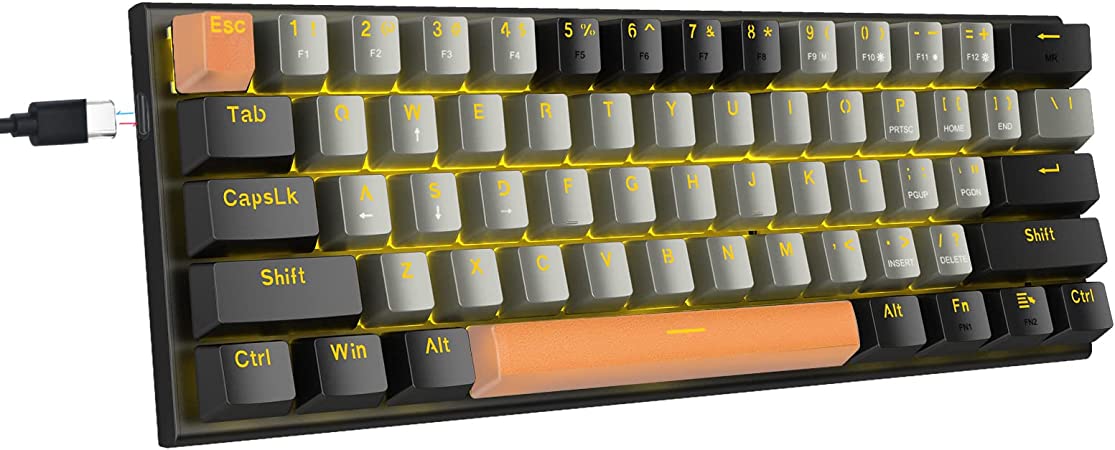Why should anyone want to spend upwards of $100 on a mechanical 60 mechanical keyboard instead of sticking with a basic $20 model? A keyboard is a keyboard, right? Not so much, actually. My opinion changed when I finally tried out a mechanical keyboard. Suddenly, I found the keys on my rubber dome keyboard to be horribly squishy. What’s so special about mechanical keyboards? To answer that, I’ll start with a little history.
In the early days of personal computers, keyboards were large, expensive devices. They consisted of a sturdy printed circuit board mounted to a metal plate with mechanical switches of various types that provide tactile and/or audible feedback when pressed. This left you with no doubt whether or not you successfully typed a character. There was no need to pound on the keyboard and bottom out on each stroke just to guarantee the keypress registered.
These keyboards were large and heavy and cost upwards of $100. When the average personal computer cost somewhere between $2,000 – $5,000, this additional price was negligible.
However, as computers dropped in price, consumers were less willing to shell out $100 – $200 on a keyboard. And manufacturers were under pressure to produce complete systems for under $1,000, which didn’t leave room for a $200 keyboard.
Enter the rubber dome membrane keyboard. The circuit was printed on a series of flexible membranes and the keys were supported by rubber domes instead of springs. Pressing a key collapsed the rubber dome, which pushed the membranes together to register a keystroke.
The problem with this construction is that the quality of the rubber domes could vary quite a bit because of simple things like the temperature and humidity on the day they were produced. Also, they were not typically as stiff as springs and didn’t bounce back as quickly, giving them their characteristic squishy feel.
Two problems resulted from this. First, you had to bottom out the keys with a fair amount of force just to make sure they actually registered a keystroke. This resulted in an unnecessary amount of jolting to the fingers and hands.
Also, you could accidentally type characters simply by resting your hands on the home keys, because rubber domes were not generally as stiff as springs. This made it necessary suspend your hands a bit in the air above the keyboard, causing fatigue over extended use.
The popularity of thinner laptops brought about the scissor switch, which had a very short key travel and there were really only two key positions: up and down. This meant that bottoming out the key was the only course of action.
These shortcomings eventually led to a resurgence of mechanical keyboards. At first, it came in the form of enthusiasts searching eBay and other second hand sources for old mechanical keyboards. This resulted in a huge price surge for the more popular ones like the Model M, the Dell AT101 and the Apple Extended Keyboard II.
But current keyboard manufacturers also took notice and began producing new ones, giving us a variety to choose from today. Most mechanical keyboard manufacturers use Cherry MX switches or one of several Cherry MX clones that have sprung up in recent years. In addition, the patent for the old IBM Model M was purchased by Unicomp and they continue to manufacture new ones. And Matias in Canada has re-engineered the old complicated Alps switches.

More Stories
Cybersecurity has also become a paramount concern as technology advances
The Transformative Power of Technology: Shaping Our Future
High Technology and Human Development